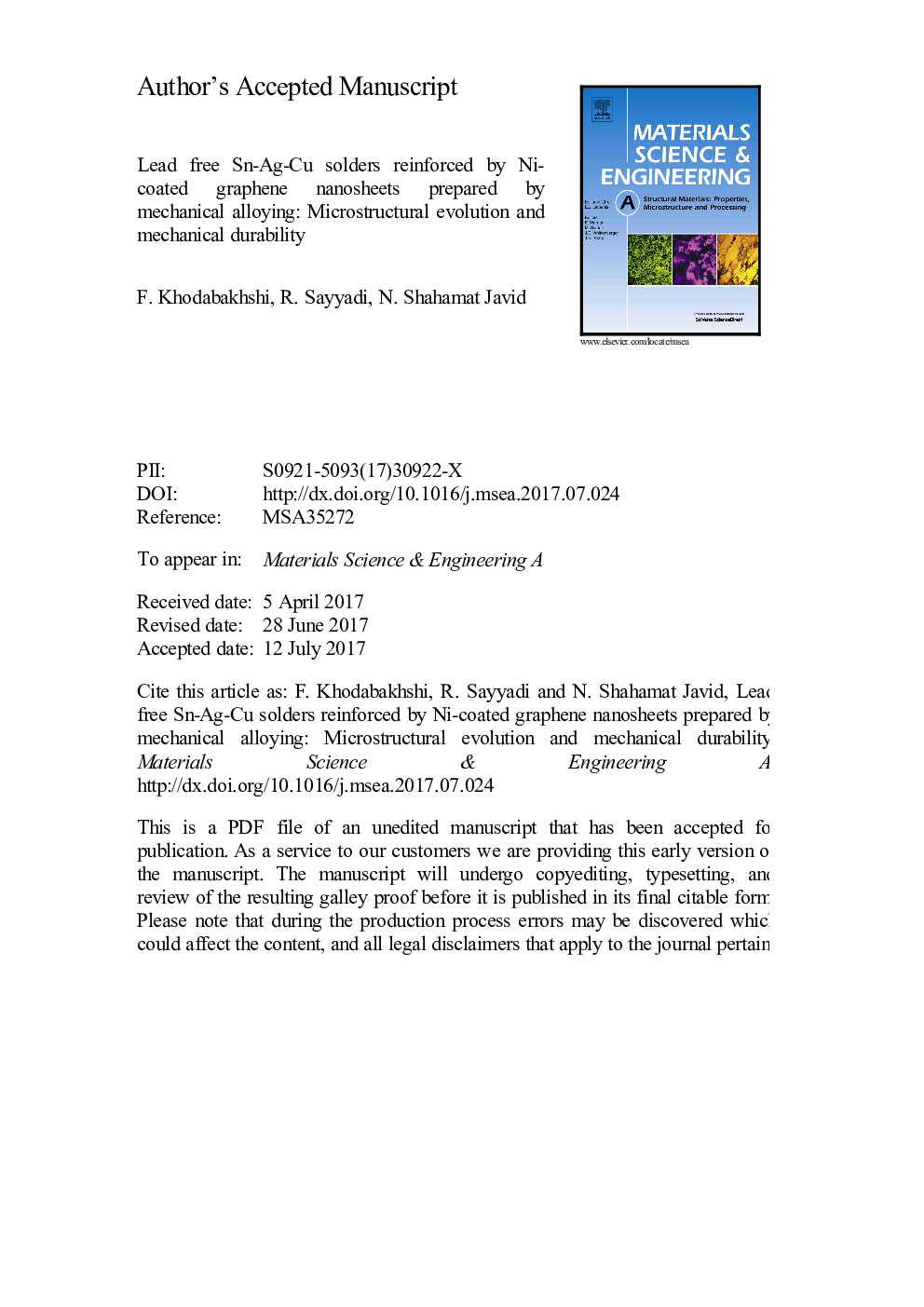| Article ID | Journal | Published Year | Pages | File Type |
|---|---|---|---|---|
| 5455849 | Materials Science and Engineering: A | 2017 | 45 Pages |
Abstract
As one of the key technologies for high performance electronic devices, composite solders have been developed to improve the thermal and mechanical properties of soldered joints. In this research, mechanical alloying was employed to fabricate the lead-free tin-based nanocomposite solders. The nanocomposite composed of a Sn-Ag-Cu ternary eutectic alloy reinforced by graphene nano-sheets (GNSs). Since the tin alloy melt do not wet the surfaces of GNSs, interface bonding between the metal matrix and these inclusions was promoted with decorating of the nano-sheets by a thin layer of chemically-deposited nickel. It was shown that nickel coating significantly improves the distribution of GNSs throughout the SAC matrix prepared by the severe plastic deformation route. Additionally, brittle and elongated intermetallic compounds were significantly refined to distribute the particles with an average diameter of a few hundred nanometers. Microstructural studies also revealed a recrystallized fine-grained and eutectic morphology for the SAC alloy matrix before and after soldering, respectively. The role of Ni-coated GNSs on retarding the growth of intermetallic phases upon soldering process is presented. We have employed a solid-state post ageing process to enhance the mechanical properties of the developed soldered joints by precipitation hardening mechanism assisted by nano-sheets, as well. Enhanced strength and ductility of the copper soldered joints prepared by the nanocomposite solder is shown. A maximum enhancement of ~ 65% in the tensile-shear strength is reported, while the ductility preserved up to ~ 63%, as well.
Related Topics
Physical Sciences and Engineering
Materials Science
Materials Science (General)
Authors
F. Khodabakhshi, R. Sayyadi, N. Shahamat Javid,
